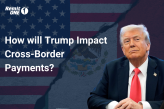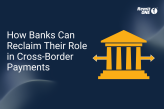Saudi Arabia and the GCC: How to Tap into one of the World’s Biggest Payments Markets | IPR Global 2023 February 29, 2024

Join us for an enlightening panel discussion where our expert panellists will delve into the dynamic landscape of payment and remittance services within Saudi Arabia and the Gulf Cooperation Council (GCC) region.
Discover the latest market trends, regulatory insights, and technological innovations driving this vibrant sector. Gain valuable knowledge about consumer behaviour, cross-border remittances, financial inclusion initiatives, cybersecurity, sustainability efforts, and prospects.
Moderator:
- Ibrahim Muhammad, Payments Consultant, Finxplor
Panellists:
- Yasser Fathi Alkhouli, Chairman & CEO, Labbaik Global Ltd.
- Nadeem Qureshi, CTO, USI Money
- Saif Khan, President – EMEA, BILRS
What makes GCC such a significant region for payments and remittances?
The GCC has emerged as a powerhouse in the payments and remittances sector, with a staggering market value of $140 billion, a stark contrast from its valuation of $25 million in the early 2000s. This exponential growth underscores the region’s economic significance. What makes the GCC even more noteworthy is that two of the top three sending markets globally are from within its borders, namely the UAE and Saudi Arabia, as highlighted by Saif. The interconnection between migration and this surge in the payments market cannot be overstated, with approximately 30% of the world’s migrants residing in Gulf countries. This not only explains the current momentum but also points toward the untapped potential for further expansion. Saif’s insights into the UAE market, boasting around 10 million individuals with 9 million being expatriates, of which almost 60% are from Southeast Asian countries, provide a granular understanding of the diverse demographic contributing to the region’s payment dynamics.
Yasser adds another layer to the discussion by emphasising Saudi Arabia as the fastest-growing within the region. As Saudi Arabia strives to achieve its ambitious goals by 2030, the payments and remittances industry is set to play a pivotal role in shaping the economic landscape of the region.
What are the primary challenges and opportunities for businesses looking to enter or expand into key markets like Saudi Arabia and the UAE?
Entering or expanding into key markets like Saudi Arabia and the UAE presents a nuanced landscape of challenges and opportunities. Nadeem sheds light on the unique dynamics within the GCC, highlighting the differences in how countries operate internally despite shared interests like security and religion. He draws attention to the varying compositions of the migrant population, with the UAE boasting a highly skilled workforce (9 out of 10) compared to Saudi Arabia (4 out of 10), where the majority are labour workers.
Saudi Arabia’s policy to promote local employment aligns with its 2030 vision, however, cultural challenges are prevalent in the market, where large corporations grapple with stakeholders who may not easily comprehend intricate industry aspects. This calls for a need for simplification and effective communication strategies to navigate potential misunderstandings. Furthermore, the creation of new cities with unique laws and regulations essentially will form microcosms of countries within the country. This complex setup unveils opportunities within the sector, but it also demands a meticulous investigation into the business proposition.
Yasser points out the evolving nature of the market, where he specifically highlights Saudi Arabia’s ambitious city plans, such as NEOM, presenting a frontier of opportunities and ushering in a new era. With the planned expansion of the capital, Riyadh is to be five times its current size which signals the potential for businesses to establish a presence in these emerging zones. The country’s demographic consists of 75% under 40, whom are well-educated, which highlights the availability of skilled human capital, further enhancing the appeal for businesses seeking to enter or expand in these key markets. In essence, the challenges and opportunities are intricately woven into the unique fabric of each country, requiring a strategic and culturally sensitive approach for successful market entry and expansion.
How has the Saudi youth adapted to the digital landscape?
The youth’s seamless integration into the digital landscape, evident through active participation in conferences and tech exhibitions, has become second nature. This growing digital presence not only parallels the annual surge in new businesses but also cultivates a tech-savvy and readily available workforce. Yasser points out the restrictions the government has implemented on studying abroad, encouraging individuals to pursue their education domestically, to foster academic growth within the country. Notably, Saudi boasts one of the top 30 universities in the UAE, the King Abdullah University of Science and Technology. The ongoing trend of remote work, accelerated by the pandemic, has simultaneously opened new opportunities for Saudi youth to contribute to various industries from the comfort of their homes.
Despite the prevalence of migrants being employed for labour-intensive roles, Yasser points out the presence of global non-Saudi nationals in sectors like tourism. Recognising this diversity is crucial when analysing workforce dynamics in the region.
The mention of the Umrah pilgrimage, a significant event attended by millions of Muslims, brings attention to the unique religious aspects that businesses must consider. Yasser advises companies operating in the region should align their services with the principles of religion, particularly when catering to events like Umrah, where spending decisions are influenced by religious laws.
How can the payments industry contribute to improving financial inclusion in Saudi Arabia and the rest of the GCC, and what initiatives are currently in place?
Nadeem provides valuable insights into how the payments industry can play a pivotal role in enhancing financial inclusion, particularly focusing on Saudi Arabia. Financial inclusion, as he defines it, involves both participation in various transactional aspects and exerting control over the entire transaction process, from initiation to delivery. However, he notes that gaining approval from the Saudi Arabian Monetary Authority (SAMA) is a prerequisite, making entry difficult. He suggests an alternative route, collaboration with companies involved in different stages of the transactional chain.
The remittances sector poses a unique challenge due to the historical dominance of the top four players, often working closely with local partners. Nadeem proposes separating remittances from acquirers, PayFac, and tech providers, then strategically selecting components that foster financial inclusion. Overcoming hurdles for small and medium-sized enterprises (SMEs) is another focus, given the regulatory mandate for banks to engage with other banks. Nadeem suggests navigating this constraint by leveraging aggregators under the remittance umbrella to facilitate relationships and streamline the process.
Regulatory pressures have led to a reduction in the number of Money Transfer Operators (MTOs). The regulations dictate that to maintain their status, MTOs must refrain from establishing new global network relationships, indicating a shift in how remittances are managed, with a greater emphasis on the banking perspective. This contrasts with the situation in the UAE, where exchange houses wield more influence in the remittance landscape.
What are some incentives for Saudi startups in the Fintech landscape?
Yasser echoes Nadeem’s point that there has been a steady increase in new players and heightened competition in recent years. One crucial aspect is the intersection of regulations and payment products, presenting a significant opportunity for Fintech startups. Drawing parallels with the tourism industry’s success in introducing instalment payments, buy now pay later options, vouchers, and loyalty programs, Yasser suggests that similar tactics could be applied to the payments and remittances market. This strategic approach has the potential to boost transactions by 20-30% annually. While the technology is capable of offering these services, there is less utilisation of it in the current market.
To stand out in the competitive landscape, payment companies should incorporate creativity in diversifying their products and services. By tailoring offerings to resonate with the target audience and provide tangible benefits, companies can foster customer loyalty.
How are Fintech companies and startups contributing to the transformation of the payments landscape in the region? Can you share examples of successful innovations?
Saif provides valuable insights into how Fintech companies and startups are driving a transformative shift in the payments landscape of the region, citing significant growth indicators and successful innovations. Notably, he highlights a remarkable increase in fundraising for startups, with a staggering growth rate of 170% from $35 million in June 2023 to $95 million in July 2023. This substantial investment influx signifies the progress and potential of startups in the region, fueled by ambitious leadership visions such as Saudi Arabia’s 2030 plans and the UAE’s 2050 goals, aiming to double population, economy, and resources.
He further draws attention to the evolution of Fintech solutions, noting the regulatory clarity that now exists compared to the past. Previously, launching a prepaid program was challenging, but today, banking-as-a-service models operate under well-defined regulations, with clear licensing and specifications of their roles and responsibilities.
In terms of corporate expenses, Saif highlights a notable shift from traditional payroll methods to more streamlined processes involving gift cards and multi-currency cards. This transformation has made it easier for SMEs to manage their expenses through the implementation of advanced software and tools, eliminating tedious and time-consuming procedures.
The impact of the Wage Protection System (WPS), mandated by the Saudi Arabian Monetary Authority (SAMA) has played a crucial role in bringing many individuals into the banking sector, including the unbanked and underserved populations, thereby expanding financial services to a broader audience. Moreover, the entry of players from the US and UK markets indicates the global interest and recognition of the region’s fintech potential.
How do you see the adaption of AI and Blockchain technologies within the payments sector in the region?
The status of cryptocurrency, specifically Bitcoin, in Saudi Arabia exists in a legal grey area, it’s worth noting that no penalties or fines are imposed for its use currently. Nadeem suggests that the authorities are cautiously monitoring the situation, acknowledging the potential risks but also recognising the need to stay on top of global trends to meet its 2030 visions. While Saudi Arabia has not outright banned cryptocurrencies, it maintains a vigilant stance.
In contrast, blockchain technology is actively utilised in the GCC region, particularly in crypto-friendly locations like Dubai. Settlements, exchanges, and transactions involving Saudi Arabia often take place through facilities provided in neighbouring countries, such as the UAE. This cross-border utilisation showcases the potential of blockchain technology in facilitating seamless transactions within the region.
AI plays a major role in Saudi Arabia’s 2030 vision. The ambitious plan involves extensive implementation of AI technologies, particularly in new city projects that are heavily technology-driven. Biometrics, contactless payments, and various opportunities in the AI landscape are integral components of this forward-looking initiative.
Yasser points out the imminent surpassing of Saudi Arabia’s 2030 Vision within the next two years and the unveiling of the 2040 Vision in 2025. This rapid evolution indicates the country’s openness to new opportunities and its commitment to continually embrace and expand its technological landscape.
What do you foresee as the future trends and opportunities in the payments space in Saudi Arabia and GCC?
Yasser anticipates the transfer of dynamics from the tourism industry to the payments sector, foreseeing a replication of successful models in the years to come. He emphasises the versatility of Saudi Arabia, noting that consumer behaviour can vary between the northern and southern regions. This regional variability necessitates a thoughtful consideration of tailored products and services to cater to specific preferences in different areas.
Saif predicts a substantial growth in payments, with expectations of doubling or even tripling in the coming years. He highlights a significant shift in payment culture, noting the emergence of strong players in the remittance sector that offer a diverse range of services, such as bill payments and travel cards. While there has been a 35% shift to digital platforms, a substantial 60% of transactions still occur in brick-and-mortar stores. Interestingly, comparing this to the US market, people in the UAE are adapting digitally faster.
The role of population growth, driven by expats, startups, and investors also acts as a key factor in shaping the future of the payments landscape. The increasing economic activity and diversity in the population contribute to the expectation of ongoing growth and evolution in the payments sector.
What next?
At RemitONE, our commitment is to provide you with cutting-edge technology, compliance solutions, and expert guidance to navigate the ever-evolving landscape of remittances. Whether you’re just starting out or looking to scale your business, we’ve got you covered.
Want to see how RemitONE can elevate your business? Book a free consultation with our experts today!
Related Posts
-

How to Build a Leaner, Smarter Money Service Business in 2025
In an era of rapid regulatory change, rising customer expectations, and digital disruption, how can money service businesses (MSBs)—companies that…
May 22, 2025 -

Trump’s Threats to Cross-Border Payments: What It Means for Your Business
It’s been a short while since Trump stormed back into office, and he’s already shaken things up with his hard-hitting…
May 22, 2025 -

Unlock Faster, More Secure Payments with RemitONE’s Open Banking Solution
We’re excited to introduce the latest enhancement to our RemitONE Money Transfer Platform: the RemitONE Open Banking Solution. Competitively priced…
January 31, 2025 -

How to Expand Your SEND Operations in the UK and Europe—Without the Regulatory Hassle
The remittance market in Europe is valued at €133.7 billion annually, with the UK market contributing an additional £23 billion.
January 31, 2025 -

The Top 5 Cross-Border Payment Trends That Shaped 2024
What a year it’s been for the world of payments! From breakthroughs in tech to surprising shifts in consumer behaviour,…
December 19, 2024 -

How Banks Can Reclaim Their Role in Cross-Border Payments with RemitONE
Banks, once the cornerstone of international payments, are finding themselves sidelined. Senders and receivers have now joined forces, pushing banks…
December 18, 2024